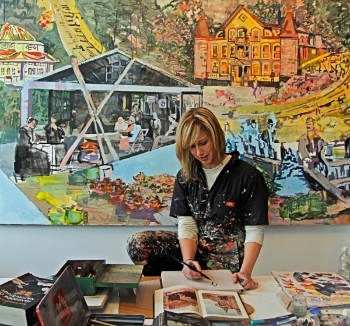Recently, Impakter sat down with painter Elizabeth Huey to discuss her process as an artist, the inspirations behind her work, and how social media has affected her success. The Brooklyn, NY resident holds a Bachelor of Arts in Psychology from Mount Vernon College and a Masters in Fine Arts from Yale University. Huey, whose works are known to reflect a broad spectrum of quandaries surrounding humanity and healing, draws inspiration from her own photographs and her ever-expanding collection of source material.
Q. How did you first begin painting?
Since I was little, I loved painting. When I was 14, I took private lessons with a Hungarian woman. She would set up still lifes and hang copies of master paintings for me to re-interpret. While I painted, she’d tell stories of her life as a make-up artist in Hollywood, a bibliophile in Paris, and a spy in World War II. She once pulled a burning log out of a fire and knocked a Nazi soldier over the head.
Q. Can you take us through the process of creating one of your pieces?
Using knives, brushes, squirt bottles, and frequently my own hand, I begin paintings in an abstract way. Spraying, rubbing, splattering, and sliding the paint across the surface, I use water and mediums to conjure marks and movement. I live with these abstract surfaces for days or months before imagery begins to materialize in my mind. I reference visuals such as photos and films, as well as literary fragments, news clippings, and poetry. Somehow, over time, these parts coalesce into a scene, an amalgamation of varying elements.
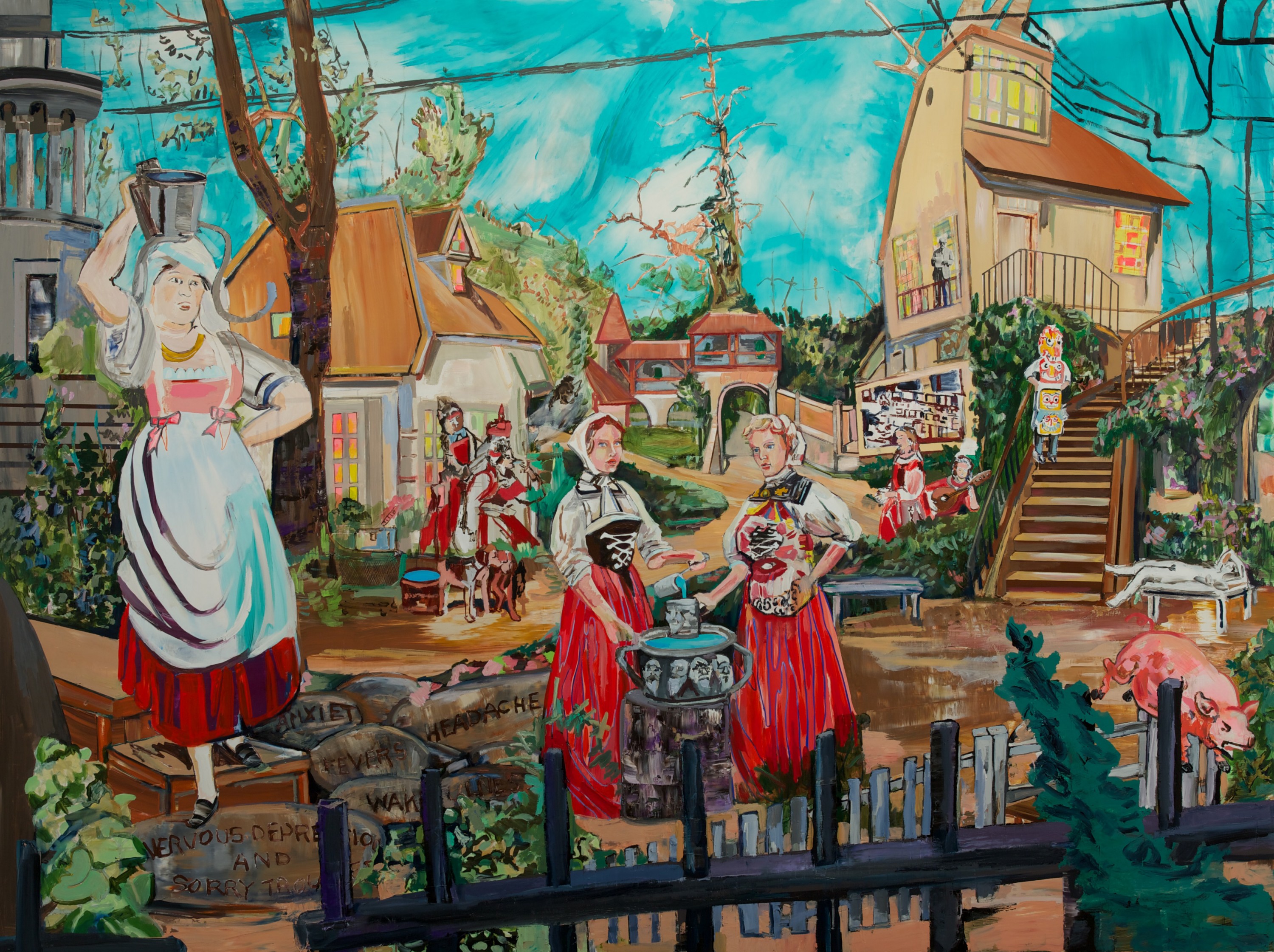 In the photo: Shilly Shally Corrective, 2009, Acrylic and Oil on Wood, 72 x 96 Inches
In the photo: Shilly Shally Corrective, 2009, Acrylic and Oil on Wood, 72 x 96 Inches
Q. You also work in sculpture, photography, and collage. From an artist’s perspective, how do you believe painting stands in comparison to these other mediums of art?
In painting, centuries can converge and rest in the same rectangle. Painting carries its own weight, depth and texture, bending time and space, recalling past events, as well as sometimes prophesying future ones. Today we often see paintings for the first time through the lens of a photograph — in a book, on a computer, or on a cell phone. The humanity of the handmade image is lost. The best paintings are breathing organisms and need to be experienced in person.
Q. You have a very significant presence on social media. How have social media platforms helped you achieve success in your craft?
Paintings do need to be seen in real life, but, in another sense, I appreciate when paintings have a life off the wall. There aren’t enough non-critical domains where paintings can circulate freely. Because people can like, comment and share on these platforms, paintings have an accessibility that’s hard to find in a museum or a gallery. For me, Instagram also provides a public venue for sharing source imagery along with actual works. The source becomes as significant as the work itself. I collect old photographs and regularly take my own snapshots. When people see them side-by-side, their influence on the paintings becomes apparent.
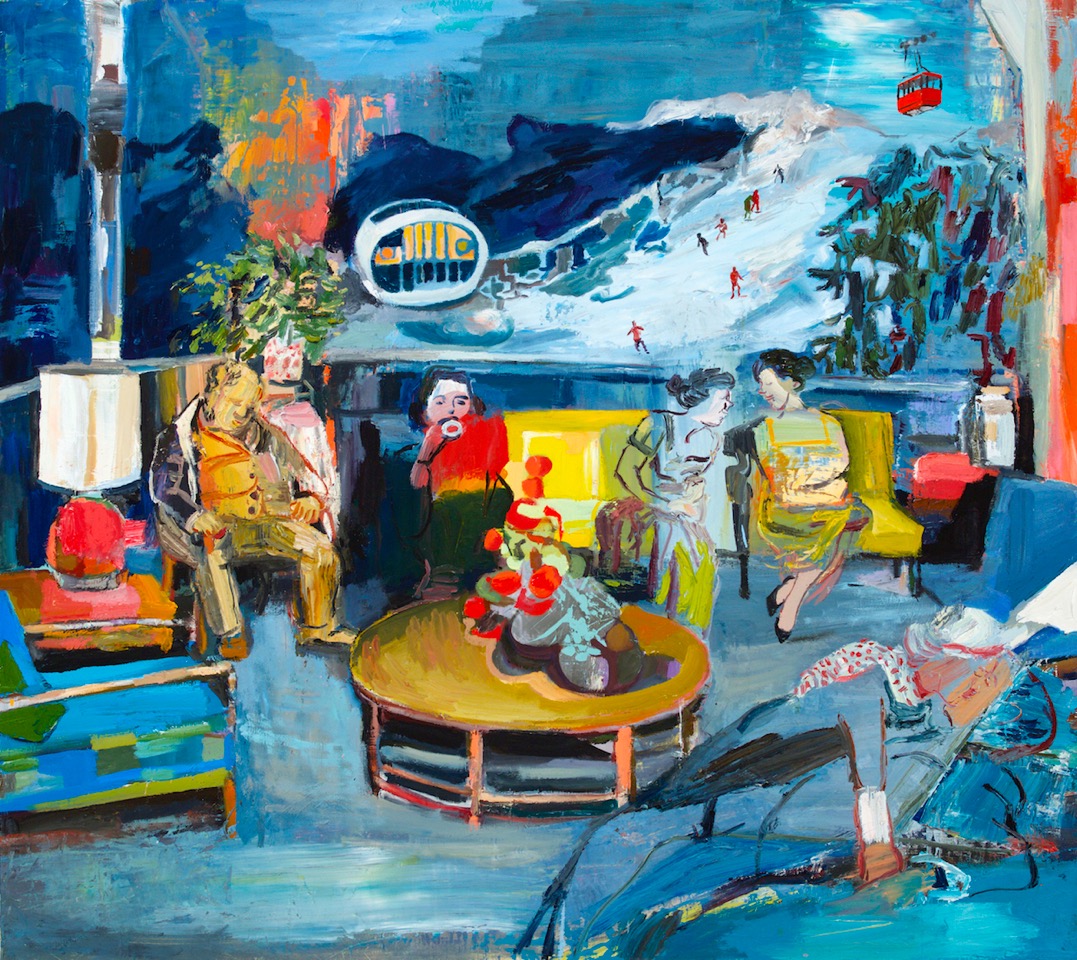 In the photo: Inauguration Party, 2015, Acrylic and Oil on Wood, 42 x 47 Inches
In the photo: Inauguration Party, 2015, Acrylic and Oil on Wood, 42 x 47 Inches
Q. Your work, through the use of color and texture, brings light to the everyday individual, often examining the human in everyday situations, such as sightseeing or lounging by the pool. As an artist, how are you inspired by people? And how does this inspiration translate into your work?
I could spend 20 years answering this question. In short, the fragility of humanity, the beauty of flawed characters, and the inexplicable spirit between forms all inspire me. Within the paintings, the figures frequently become enveloped in the sky, the land, the architecture and the paint itself.
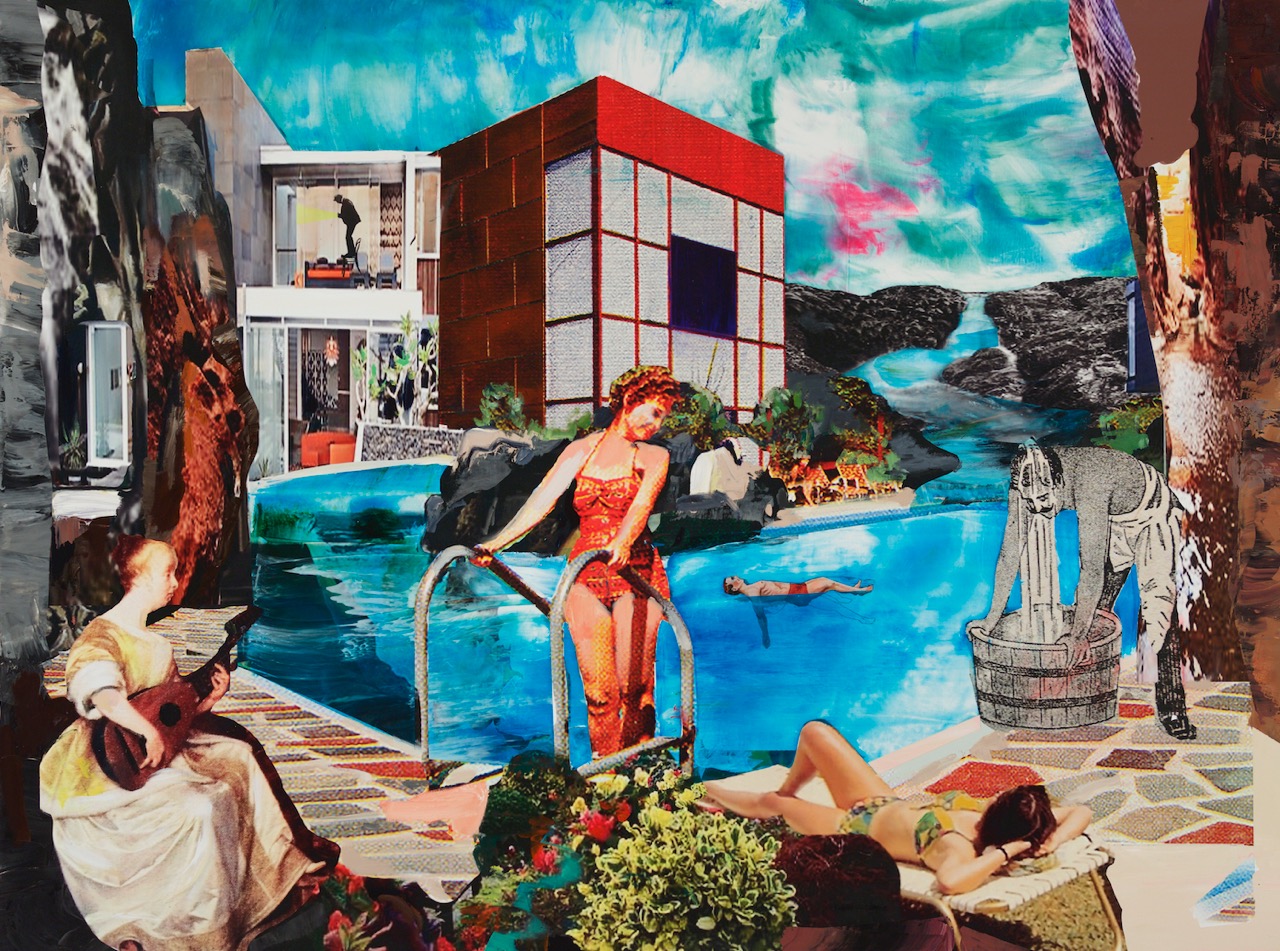 In the photo: Century’s Swim, 2014, Acrylic and Oil on Inkjet Canvas, 48 x 64.5 Inches
In the photo: Century’s Swim, 2014, Acrylic and Oil on Inkjet Canvas, 48 x 64.5 Inches
Q. Pools are a common component in many of your pieces. What is the thought behind this central subject in your work?
For almost a decade, I created works loosely based on the history of psychiatry. I was fascinated with various forms of psychological treatments and continually encountered hydrotherapy as a method of healing. Somehow, as I segued into rehabilitation centers and spas, the pool became a dominant form.
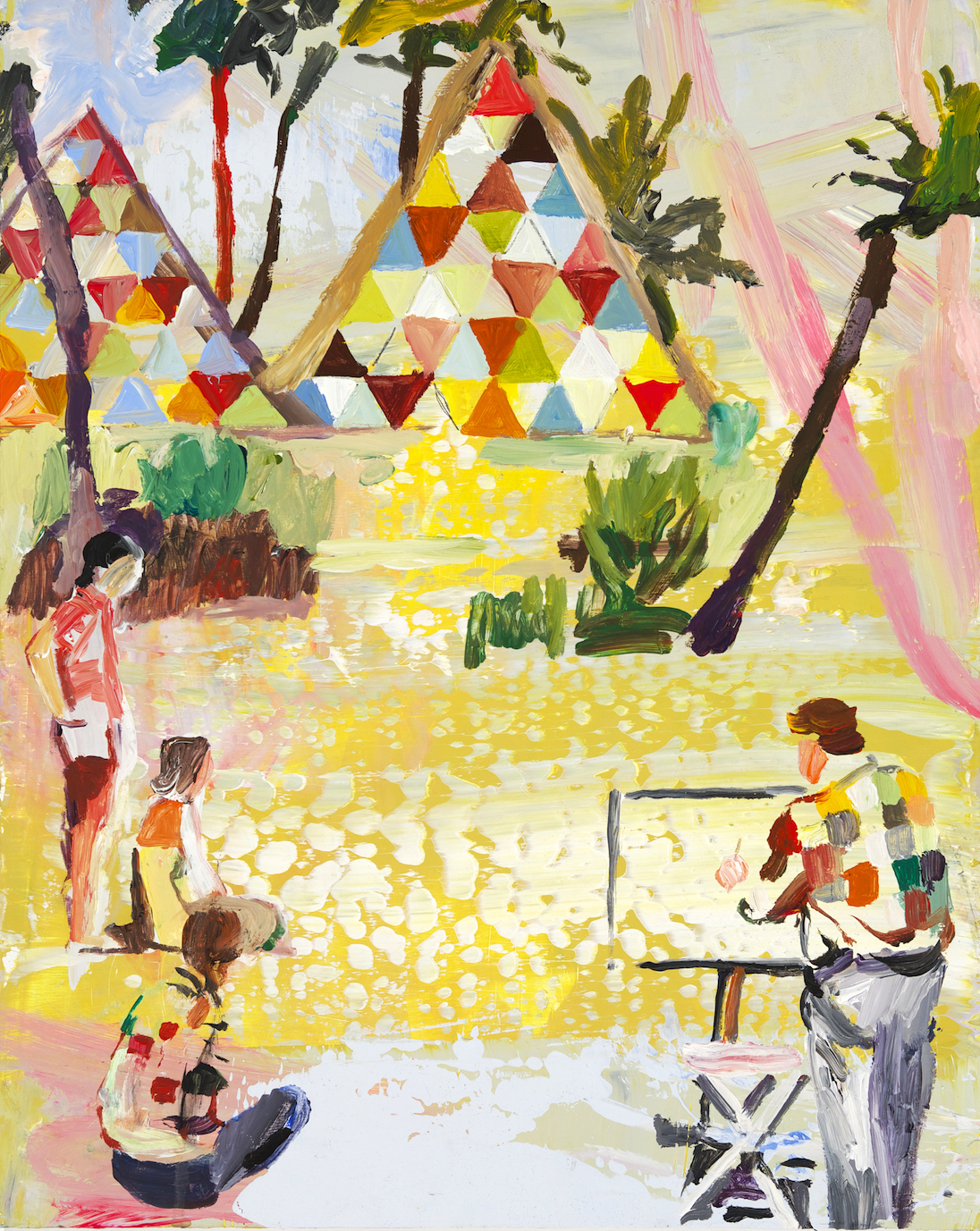 In the photo: Drafting a Mirage, 2014, Acrylic on Wood, 24 x 18 Inches
In the photo: Drafting a Mirage, 2014, Acrylic on Wood, 24 x 18 Inches
Q. Can you discuss some of you inspirations behind your piece “Drafting A Mirage”?
Many of my paintings pose questions. Drafting A Mirage asks: Does the world impress itself upon us, or are our brains continually scripting occurrences in the world? The psychological controversy over nature verses nurture still looms. The supposedly blank canvas we are given at birth has been marked already. The genetic coding is there but to what extent can it be altered?
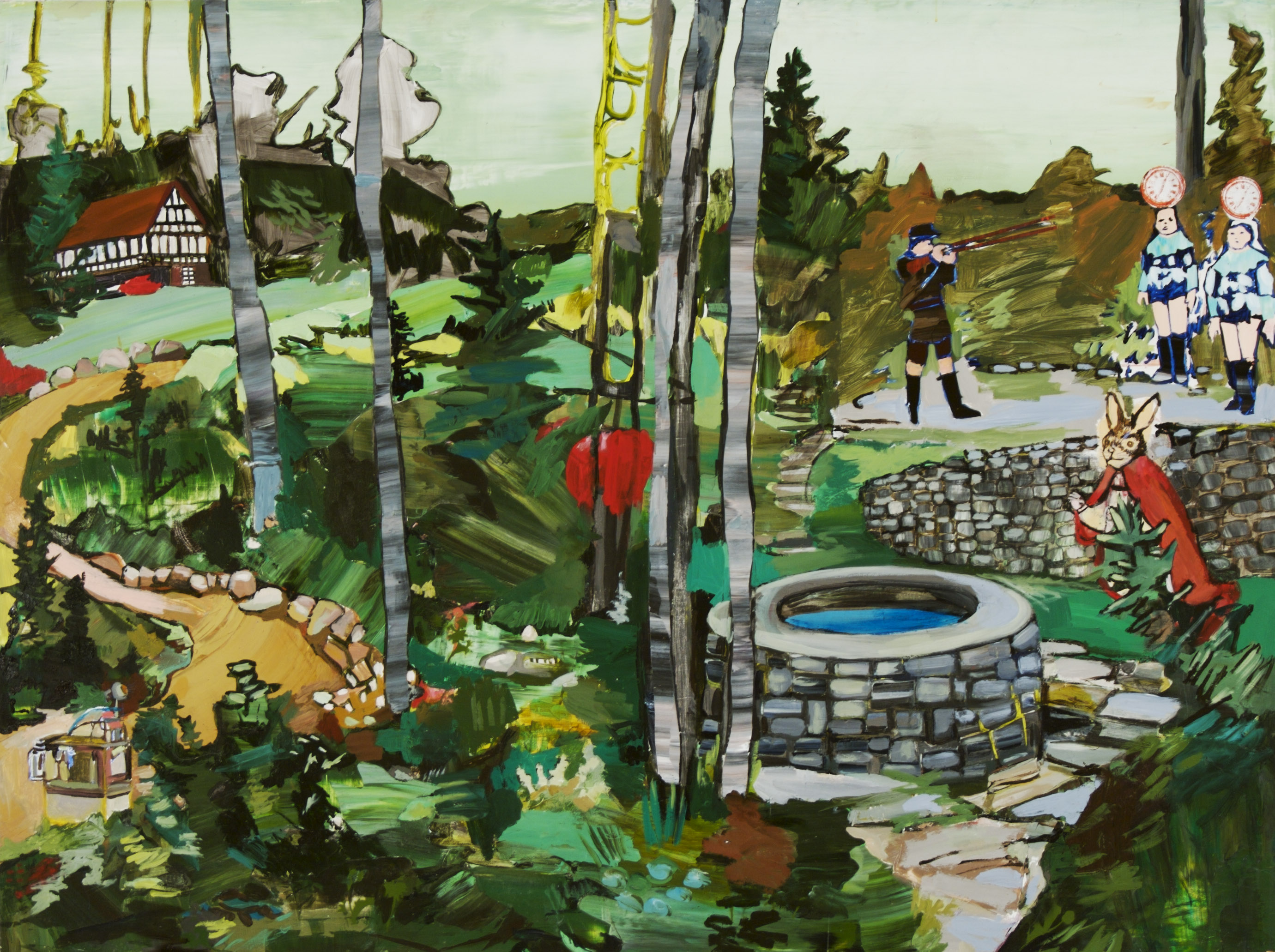 In the photo: The Assasination of the Two Clocks, 2009, Acrylic and Oil on Wood, 30 x 40 Inches
In the photo: The Assasination of the Two Clocks, 2009, Acrylic and Oil on Wood, 30 x 40 Inches
Q. Taking a look at some of your older works, what are the inspirations behind “Assassination of the Two Clocks”?
Assassination of the Two Clocks is part of my “Chronophobia” series. Chronophobia is a fear of time, a feeling that life moves too fast and becomes impossible to comprehend. The two clocks may represent the past and the future while the twins reflect the temporality of the body. Sometimes I wish to end the ceaseless attention to numbers and logic that living in our society demands. Thankfully, the world of painting welcomes irrational, emotional and non-linear gestures.
Elizabeth Huey can be found on her website (elizabethhuey.com) or Instagram (@elizabeth_huey)
Elizabeth Huey Instagram



